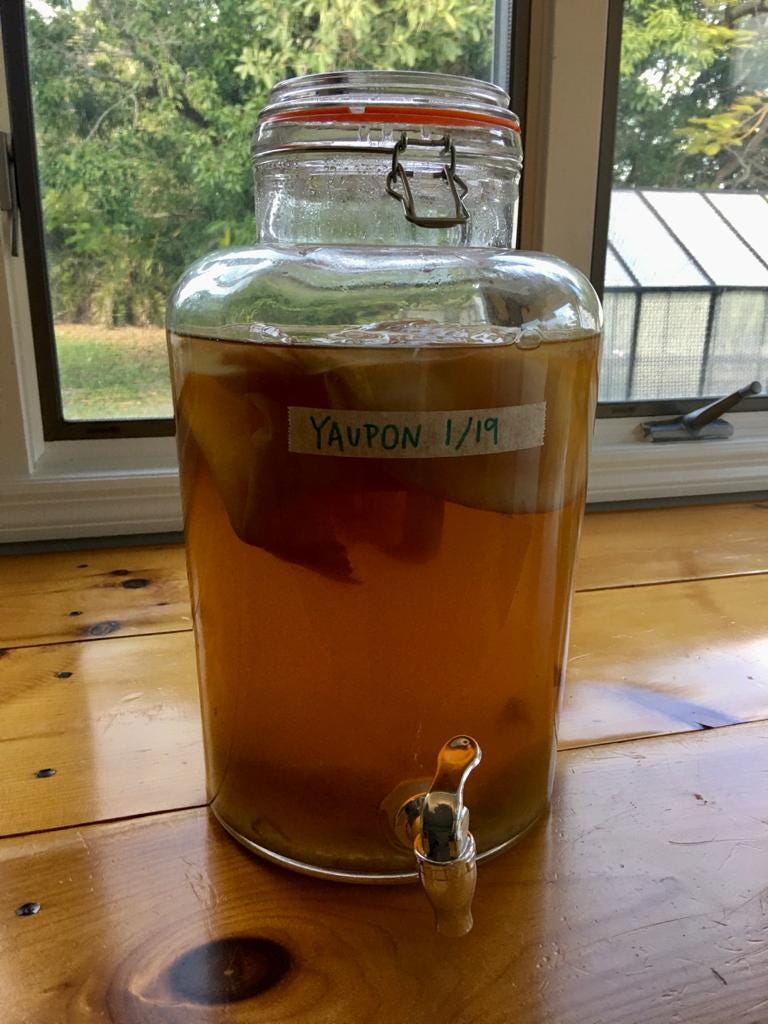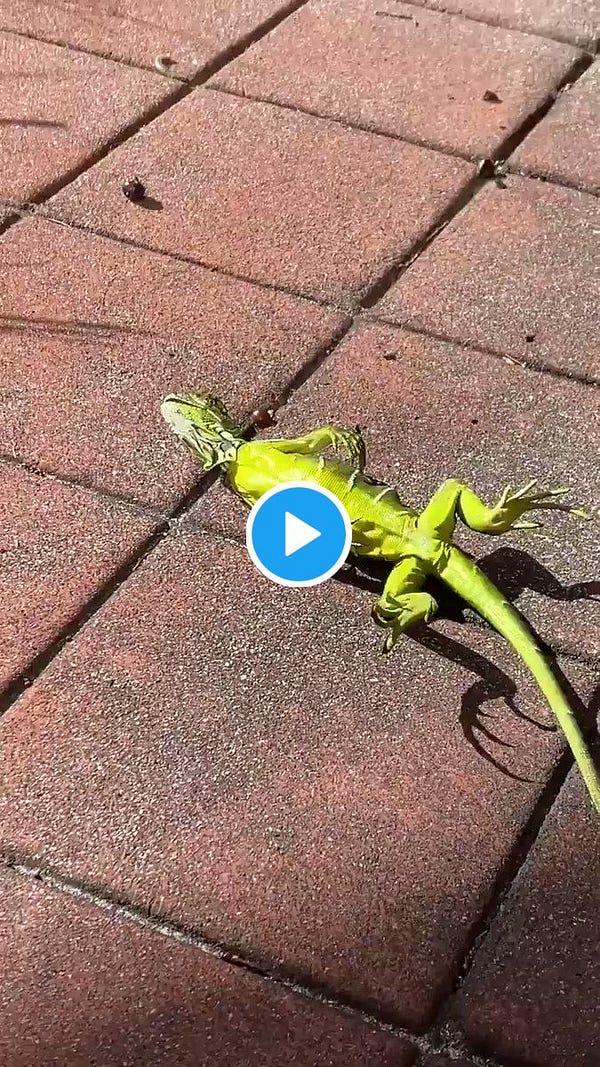In this week’s edition, Jackie shudders at a return to sloppy joes and taco meat in the school cafeteria. We also listen to a true crime climate change podcast while sipping a fizzy kombucha. And with your powers combined, we reminisce about Captain Planet!
If someone shared this newsletter with you, subscribe below.

When I was growing up, cafeteria food was a study in browns — chocolate milk, tater tots, taco meat, sloppy joes. Your veggies were the tomato sauce on your pizza. Fruit meant a cup of jello.
Under the leadership of Michelle Obama, the Obama administration sought to improve school nutrition standards. The new rules axed trans fats, reduced sodium, and increased servings of whole grains and fruits and veggies. Because when you make school lunch nutritious, kids do better. Healthy children feels like a thing we can all get behind, right?
But as of last week, the USDA under the guidance of the Trump Administration has stripped away most of those standards, ditching the whole grains, sodium restrictions, and fresh produce requirements. This is the latest in a slow dismantling of Michelle Obama’s signature accomplishment -- The Healthy, Hunger-Free Kids Act. This latest round of deregulation was announced on the former first lady’s birthday, for an extra dash of pettiness. As the Washington Post explains:
Friday’s proposals would allow schools to cut the amount of fruit included in breakfasts served outside of the cafeteria from one cup to a half cup. The remaining calories could be filled with sweet pastries and granola bars. For lunches, the proposals would allow schools to offer potatoes as a vegetable every day and gives them the flexibility to provide things such as pizza and burgers as a la carte items that students may choose over more nutritious full meals.
I don’t talk about nutrition much in this newsletter. It’s a complicated topic and I’m not an expert. Mostly I don’t want to contribute to the cacophony of clean-eating wellness gurus that populate the internet. But in this case, I hope there’s consensus that when it comes to school lunch, we can do better than chocolate milk and tots. Feeding children at school is surely as fraught and complicated a topic as nutrition itself, but it doesn’t need to be a partisan issue, and it definitely shouldn’t be padding anyone’s pockets.
According to Colin Schwartz at the Center for Science in the Public Interest, a key player behind these weaker standards is everybody’s favorite villain, the potato lobby. Now don’t get me wrong. I am a French fry queen. But do I think the economic motives of a group of crop-specific farmers should have anything at all to do with what kids eat in school? Of course not. Because I’m a reasonable human being.
I’m sure the Obama-era school lunch policy was far from perfect, and the decision to roll back those standards was likely much more involved than let’s do a mean thing to Michelle Obama on her birthday. Still this new food policy will have a tangible impact on the country’s schoolchildren, and particularly the millions of kids that rely on school meals for the majority of their daily food intake. That seems like a decision that should be made by medical professionals, not potato farmers or other special interests.
U.S. agriculture is a force to be reckoned with. As much as people like to think they’re in charge of what they eat, many of the nutrition standards and food and ag policies set forth by the US government are sculpted by agribusiness (which spent a collective $100 million on lobbying efforts in 2019). And then there’s the omnipresent marketing that shapes our food choices. Beef: It’s What’s for Dinner. Got Milk? Even the slogan “Breakfast is the Most Important Meal of the Day” was a myth created by lobbyists.
Do the financial interests of small but powerful groups dictate how and what we feed ourselves and our children? I’d bet my whole plate of cafeteria tater tots that nobody reading this wants that. Don’t let the ads or the USDA fool anyone. Parents deserve better than what lobbies want for their kids.
love,
Jackie
We don’t mind a little propaganda. Tell your friends and family that Sunshine + Microbes is the most important meal of the week:

LISTEN TO THIS
Weaponizing False Equivalence | Drilled


I’ve been inhaling a new-to-me podcast this week that I wanted to share. Drilled is climate change à la true crime. Reported by Amy Westervelt, the first season investigates how oil companies systematically sowed doubt and confusion about climate change in the United States, employing a carefully crafted media strategy over the course of several decades. Decades ago, oil companies funded most of the research that has shaped our understanding of climate change. Then, those same corporations made a conscious decision to bury and obscure that science. They successfully fabricated a debate about that science when in fact there was no debate at all.
I highly recommend listening to the entire series, but episode three is a particularly fascinating exploration of false equivalence. It delves into how oil companies capitalized on news outlets’ desire to give equal weight to both sides of any story, even if one side is based on facts and the other on nonsense. Using hand-picked “experts” and bunk science, the oil industry created a counternarrative to the realities of climate change that ended up receiving equal airtime to the well-established facts. Science historian Naomi Oreskes makes a great analogy:
Many journalists think that being objective means giving equal time to “both sides of an issue”. But in the case of scientific work, where scientists have worked on the problem, examined the evidence, and come to a conclusion, there really isn’t an equal and opposite side. Sometimes I make an analogy or a metaphor with sports reporting. If the Yankees beat the Red Sox last night six to one, journalists would report that, and they would not feel compelled to find someone to claim that the score was actually six to four or that in fact the Red Sox had won six to one. That would be seen as completely preposterous as in fact it is.
Suggest this episode to anyone under the impression that there is a debate about climate change in the scientific community (to my nieces and nephews: the power is in your hands).
—Jackie
Fresh links
🍻Pints of Progress: The brewers changing attitudes toward learning disabilities | The Food Programme
Reporter Jaega Wise spotlights the work of two British breweries employing adults with disabilities.The job market can be challenging to navigate, with an unemployment rate of about 94 percent for British adults with intellectual disabilities. With that in mind, the founders of Ignition Brewery and Spotlight Brewing set out to create work opportunities that capitalize on the unique skill sets of adults with disabilities. Throughout the story we hear from several of these brewers and bartenders, and understand how much it means to them to participate in meaningful, often high-skilled work. Plus the perks of the job are pretty appealing 😉 Here is a visionary approach to social -inclusion in the world of food production.
🌎🌬️🌊🔥💖How We Made Captain Planet and the Planeteers | The Guardian
I (Matt) went down a rabbit hole with these interviews about Captain Planet and the Planeteers, the popular 90s cartoon about environmental superheroes. The Guardian spoke with the show’s co-creator Barbara Pyle and Captain Planet’s voice actor David Coburn on the cartoon’s prescience about environmental destruction and its influence on millennials.
Ted Turner, the billionaire media mogul, actually came up with the idea of developing an eco-friendly superhero named Captain Planet. He left it up to Pyle to figure out the rest. She took her characters and locations from environmental documentaries.
The show brimmed with star power. Jeff Goldblum, Sting, Meg Ryan, Tim Curry, and Martin Sheen all voiced villains. Whoopi Goldberg voiced one of the heroes. And did you know Tom Cruise was the original voice of Captain Planet?! (He did the first five episodes before Coburn took over. Sadly, I can’t find any footage from it)
Whoopi Goldberg is not happy about Earth’s environmental degradation:
The show can look painfully corny today with its outdated animation style, hokey dialogue and bad guys with names like Hoggish Greedly and Looten Plunder. But Captain Planet’s creators took the show’s environmental message seriously. They begrudgingly supported merchandising but prohibited the superhero’s image on single-use products and made action figures from recycled material only. Part of the revenue from the merchandise funded the nonprofit Captain Planet Foundation that still does work today, long after the program went off the air. And at last there’s the show’s influence on the kids who grew up watching it. Said Pyle:
Our goal was to arm a generation with the knowledge to find more sustainable ways of living on the planet. The millennials are living proof that it worked. These adult Planeteers are growing into positions of power, bringing their knowledge to bear to make the changes we need. This work is critical, because today, it’s as if the show’s eco-villains have come to life. Opposing them are legions of inspired people worldwide, marching to combat the climate crisis. However, we are almost at the point of no return. The fate of our species – and all living things – is now truly in our hands.
👨🚒👩🚒🌲In Australia, A Secret Mission to Save a Tree Species that Outlived the Dinosaurs | NPR
Aussie firefighters continue to do yeoman’s work, fending off bushfires that have devastated the country and pushed threatened wildlife toward extinction. In recent weeks, the New South Wales Rural Fire Service went on a confidential mission to save a prehistoric tree species as fire enclosed on the area:
Wollemia nobilis peaked in abundance 34 million to 65 million years ago, before a steady decline. Today, only 200 of the trees exist in their natural environment — all within the canyons of Wollemi National Park, just 100 miles west of Sydney.
The trees are so rare that they were thought to be extinct until 1994.
And no joke — there were top secret vibes to this endeavor. The government keeps the location of the pines under wraps. They don’t want visitors who “could introduce disease and might trample regenerating plants.”
When the mission was completed and the smoke cleared, two Wollemi pines had died and a few others had been charred. The firefighters’ plan to keep alive a prehistoric species had succeeded.



Continuous Brew Kombucha

Kombucha is a sour, slightly fizzy fermented tea that is refreshing on a hot day, or a much needed balance after eating too much mac and cheese (cuz it makes you burp! In a good way). Although omnipresent in supermarkets and cafes now, it’s easy to make your own booch at home. It’s a simple ferment, particularly when using the continuous brew method outlined below. You’ll need to source a SCOBY (“symbiotic culture of bacteria and yeasts” aka a solid, gelatinous-looking fermentation mother). Get one from a friend or from the internet. Also get a large container with a spigot, which can be found at a local Home Goods.
Ingredients + Special Materials
1 gallon water
1 cup sugar
6-8 black tea bags of choice or equivalent loose leaf (I love using the Fire Roasted Yaupon from Yaupon Brothers. Experiment with your favorite type of tea, but note that black teas are traditional and seem to be easiest for the SCOBY to process.)
Kombucha SCOBY
2-4 cups mature kombucha (find at a farmers market or an unflavored, unpasteurized variety from the supermarket)
Large glass or ceramic container with spigot
Kitchen towel and string
Step-by-step
Add sugar to water and heat until sugar is dissolved and water begins to simmer. Remove from heat, add tea, and let steep until you like the taste (3 minutes is a good rule of thumb for black tea).
Strain out tea and let cool to room temperature.
Pour tea into the container with spigot (henceforth “the tank”). For the initial batch, add the mature kombucha and the SCOBY.
Cover the tank’s opening with a kitchen towel and fasten with string. This will serve as a barrier from dust and dog hair, while still allowing for airflow. Let the kombucha ferment at room temperature for 10 days to two weeks, or until it is slightly effervescent and pleasingly sour. The longer it ferments the more sour it will taste.
Once the kombucha has hit the sweet spot, remove some for drinking via the spigot. Store this ready-to-drink “mature” kombucha in a bottle or mason jar in the fridge or use it to make a flavored carbonated drink (which you can research on the internet, or one day I can write a recipe if there is interest 😘).
When the tank is about halfway empty (or the kombucha within is too sour), it’s time to refresh it with more food to fuel the fermentation process (in the form of sugars, which the microbes in the SCOBY consume). Do this by making a fresh batch of sweetened tea (following steps 1-2) and adding it to the mature kombucha and SCOBY in the tank.
Allow this to sit and go through the fermentation process again until everything tastes right. That will likely be another 10-14 days, but it depends on the ratio of mature kombucha to sweet tea ratio.
More mature kombucha = shorter fermentation time — because there are more microbes to get things moving
More sweet tea = longer fermentation time — because there is more sugar to be eaten up by a smaller quantity of microbes
Once it is ready, return to step 5. Repeat steps 5-7 forever.
Note: Clean the tank as needed. Likewise, remove SCOBY layers as needed. A new SCOBY will form on the surface every time the kombucha is replenished.
Troubleshooting the SCOBY:
SCOBYs are extremely hardy. They can survive all sorts of environments and long periods of neglect (as long as they are submerged in kombucha). But occasionally, they can get taken over by bad bacteria. If you see brown discoloration on the scoby, that is fine. If you see fuzzy black mold, it’s time to toss it and the kombucha and find a new SCOBY. SCOBYs with black mold will not properly ferment the tea, creating a product that has not been inoculated with healthy bacteria and may be unsafe to drink. But don’t freak out. This is very rare and definitely won’t happen if the SCOBY is kept fed and happy with plenty of tea.***Writing about how to ferment things in a concise way can be challenging. If there is anything you are confused about, please reach out! I would be honored to hold your hand through this process.

The only two seasons in Florida: Summer and when it’s snowing iguanas. (By the way this invasive species can be quite tasty).




Talk to Us
Send in your comments, mailbag questions, recipe mishaps, or cooking tips: sunshineandmicrobes@gmail.com. Also do us a favor and follow us on Facebook and Instagram.
If you enjoyed this email, please share it with others. If someone forwarded this to you, click the button to sign up:
-------------------------------------------------------------------------------------------------
Sunshine + Microbes team
Jackie Vitale is the current Chef-in-Residence at the Robert Rauschenberg Foundation and co-founder of the Florida Ferment Fest. Her newsletter explores the intersection of food, culture, environment and community.
Matt Levin is a freelance reporter based in Colombia. He edits Sunshine + Microbes and contributes other scraps to each issue.


